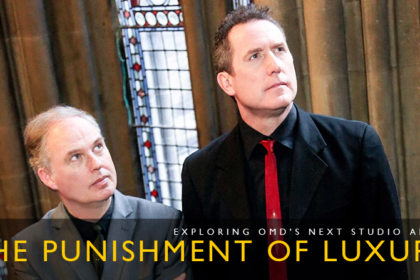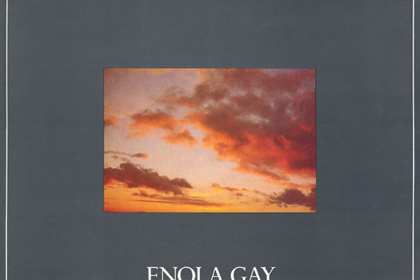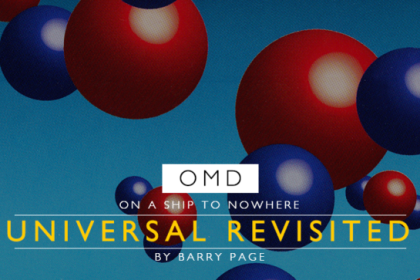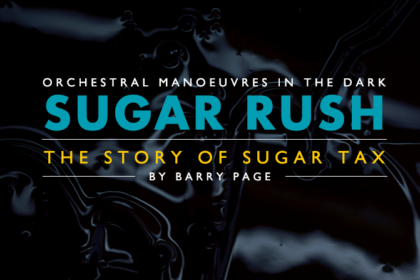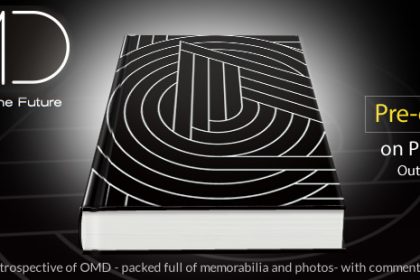My feelings still remain…
During a turbulent time for the music industry, Tim Burgess seems an unlikely herald for bringing people together over the love of albums. Better known for his involvement with rock outfit The Charlatans, Burgess has been carving out a career as a solo artist in recent years (including new album I Love The New Sky).
His concept of the listening party stems from a desire to connect with people through the power of music. “I wanted to do something that I thought would be helpful, or make me feel a bit helpful” commented Burgess in a recent BBC interview.
As a result, his listening parties draw in an audience on Twitter to listen to an album in real time. Typically, members of the bands or artists responsible for the album will also chime in with stories of the record’s production. His choice of genres is also not necessarily confined to the obvious ones, taking in everyone from Pulp to The Chemical Brothers; from New Order to Slowdive.
Considering the broad remit of the albums that Burgess chooses, OMD seemed like a likely candidate – particularly via their classic 1981 album Architecture & Morality. The band had already established themselves on the UK music scene with chart hits ‘Messages’ and ‘Enola Gay’, but it was the baroque pop of their third album that somehow captured the imagination of the public.
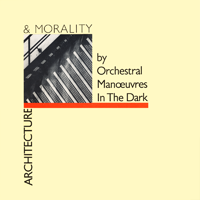
Architecture & Morality delivered three stunning singles to forge OMD’s musical status: ‘Souvenir’, ‘Joan Of Arc’ and ‘Maid Of Orleans (The Waltz Joan Of Arc)’. Meanwhile, the striking sleeve design (conjured up by Peter Saville & Brett Wickens, alongside architectural photography by Robin Roddey) added to that appeal. Not surprisingly, Architecture & Morality reached No. 3 in the UK charts and No. 1 in Belgium and Holland.
The Twitter listening party format essentially asks the audience to hit play on the album at the same time. Meanwhile, commentary would be dropped in for each track – mainly by Andy McCluskey, but also some input from Stu Kershaw as well as from Tim Burgess himself, who describes OMD as “The Wirral Kraftwerk.” Meanwhile, Messages added in some trivia alongside some appropriate images during the Twitter conversation to enhance the experience.
“Trying Mellotron tape loop sounds and writing songs about Joan of Arc” commented Andy, “we just pushed ourselves really hard to try something even more radically different on this record!”
Architecture & Morality kicks off with ‘The New Stone Age’, a composition that’s a radical departure from the instant synth-pop of ‘Enola Gay’. “Thrashing two bar chords on a guitar tuned to open E” recalled Andy, “this song was actually written over the drums on another failed track!”
Andy’s unusual style of guitar playing on this track was partially inspired by Brian Eno’s approach on albums such as 1974’s Taking Tiger Mountain (By Strategy). 1983’s ‘Genetic Engineering’ single employs a similar guitar style.
“We always used the multi track tape machine to create on” continues Andy, “You can hear the original recording re-emerging at the end to the tape!”
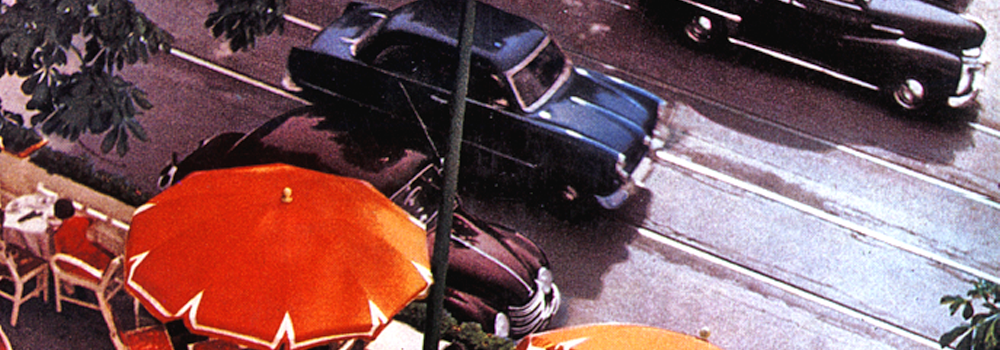
Meanwhile, ‘She’s Leaving’ was an OMD composition with a troubled history. The song had been written back in January 1981 – and tried out on tour in Canada and France. But the band’s attempts to record it resulted in them getting bored very quickly. It was only when they discovered an old version recorded at The Gramophone Suite that they tried again. Recording at The Manor, they slowed it down for a new approach.
“Really simple song” suggests Andy, “Drum Machine, bass guitar, old Vox Jaguar organ and the cheap Micro Preset synth bought from my mother’s mail order catalogue.” Meawnhile, Tim Burgess summed the song up: “Amazing pop song in the Beatles tradition.”
“This was wanted by the label as the fourth single. After three top five hits it should have been another, but I refused to “prostitute” our art by releasing another single. I was such a precious little git!”
As a compromise, ‘She’s Leaving’ was released as a single in the Benelux region. “Since Maid was #1 in Belgium and Holland, I allowed them to release a third single there (as Joan hadn’t been released).”
Really simple song. Drum Machine, bass guitar, old Vox Jaguar organ and the cheap Micro Preset synth bought from my mother’s mail order catalogue.
— Orchestral Manoeuvres in the Dark (@OfficialOMD) April 14, 2020
‘Souvenir’ had been the first single released from the album. It’s also the first OMD single that features Paul Humphreys on lead vocals. The song had been inspired by some loop tapes of choirs tuning up (a tape lent by Dave Hughes). Paul Humphreys and Martin Cooper worked with the loops to produce what was initially a very abstract song with just choirs, chords and melody (hence the working title of ‘Choir Song’).
Once again, producer Mike Howlett worked his magic on an OMD tune (he had previously transformed ‘Messages’). “The drums were Roto-Toms not a kit – we had to insist that the producer didn’t make us be conventional” offers Andy.
‘Sealand’ takes its title from a RAF base on the Wirral. Although the song isn’t about the location itself, Andy was struck by the visual strength of the name, which seemed to conjure up a striking image of a place between the land and the sea.
“Intentionally minimal” offered Andy, “like a sea shanty requiem. Also inspired by the German band Neu!’s track ‘Seeland'”.
“One of the easiest we ever wrote, Just fell together” commented Andy on how complicated ‘Sealand’ was to write. “Just love ‘Sealand'” added Stu Kershaw, “it’s a great track live too.”
“Dramatic, filmic huge sound for two people seemed to be turning into a post punk – electronic concept album” commented Tim Burgess.
Next up for consideration was ‘Joan Of Arc’ – actually the second song about Joan that had been written (‘Maid Of Orleans’ having initially been shelved). “The band had toured in France in Spring 1981 and the support band noted that many of the cities were associated with Joan of Arc. I was determined to write a song about Joan.” In fact Andy penned this song on the day that marked the 550th anniversary of Joan’s death.
The chords used on ‘Joan Of Arc’ are from a Prophet 5 synth, while the haunting choral effects are actually Andy McCluskey singing falsetto. “I still hate the sound of the bass drum on ‘Joan of Arc'” quips Andy, “Sounds like a cardboard box!”
Andy and Paul seemed to have been unhappy with the release of ‘Joan Of Arc’, coming too soon after ‘Souvenir’. In the event, it was only released in the UK and subsequently never had a promo video filmed.
The striking sleeve design for the single naturally took on a more sombre style. The statue of Joan featured in the sleeve photo stands in front of the Orleans City Hall (and is a copy of an original by Princess Marie of Orleans made in the 1830s). Meanwhile, the signature used on the sleeve is actually Joan Of Arc’s own signature. It was used to sign a letter while she was in prison in 1431.
The original version of ‘Joan Of Arc’ didn’t sit on the shelf for long. “Malcolm [Holmes] our drummer asked what happened to the waltz time Joan song” Andy commented on the track’s resurrection. “I said that I had scrapped it!”
“He told me to bring the multi track tape to the Manor studios where we were completing the album. “I’ll play on it and it will work!“ He did! And it did!”
Queried by a fan on whether or not ‘Maid Of Orleans’ was designed to suggest the sound of bagpipes, Andy chimes in: “No – it’s a mellotron violin setting that happens to sound like bagpipes.”
Meanwhile, the song’s distinctive intro had a more simple explanation: “Us overdriving the desk to elongate the beginning as the song is so short.”
The result of all these efforts was that ‘Maid Of Orleans’ proved to be successful – particularly in Europe, reaching No 1 in Belgium, Holland, Austria and Portugal.
Stu summed it up: “‘Maid of Orleans’. What can I say? Screaming bagpipe mellotron waltz with the proper snare fills. Love it.”
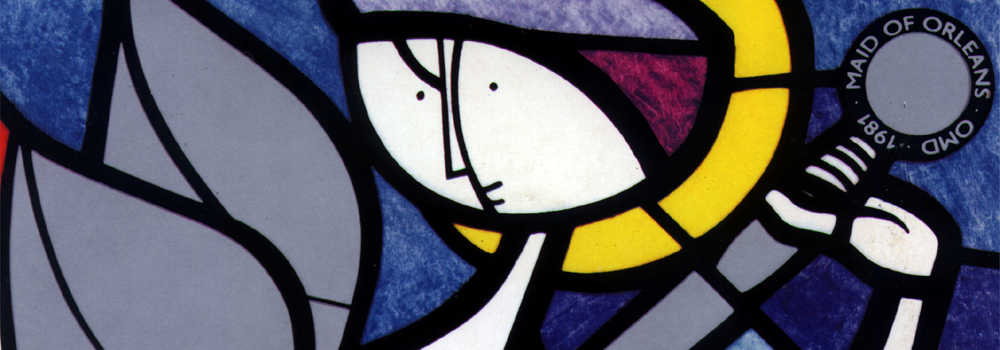
The creation of the album’s title track was pulled together over three days at The Manor studio. “Backwards Gregorian chant, smashing rocks in the drum room and a little bit of a steal from Laurie Anderson’s ‘O Superman’.”
Stu suggested that the composition “could be viewed as an eponymous transition transcending the link between the first two albums and the as yet still experimental Dazzle Ships album which came after.”
The band had written a song called ‘Georgia’ for the album but decided they weren’t happy with the result and decided to shelve the song. They were happy with the title however and wrote a new song that they decided to name ‘Georgia’.
“Song about International Geo politics” offers Andy on the song’s inspiration, “Georgia is the state that was in the old USSR. You have to remember the Cold War was still happening and we all tough that someone would push the red button and condemn us all.”
“Couldn’t think of a chorus so we randomly chopped up tape recordings of radios and spun it in! Morning Star is the socialist newspaper and the words at the end reflect that if we survived the apocalypse we would be dancing in the ruins!”
“The end of the song was added during the recording to give it a darker twist!”
The original ‘Georgia’ was dusted down in 1988 and renamed ‘Gravity Never Failed’. It featured as a B-side to the single ‘Dreaming’.
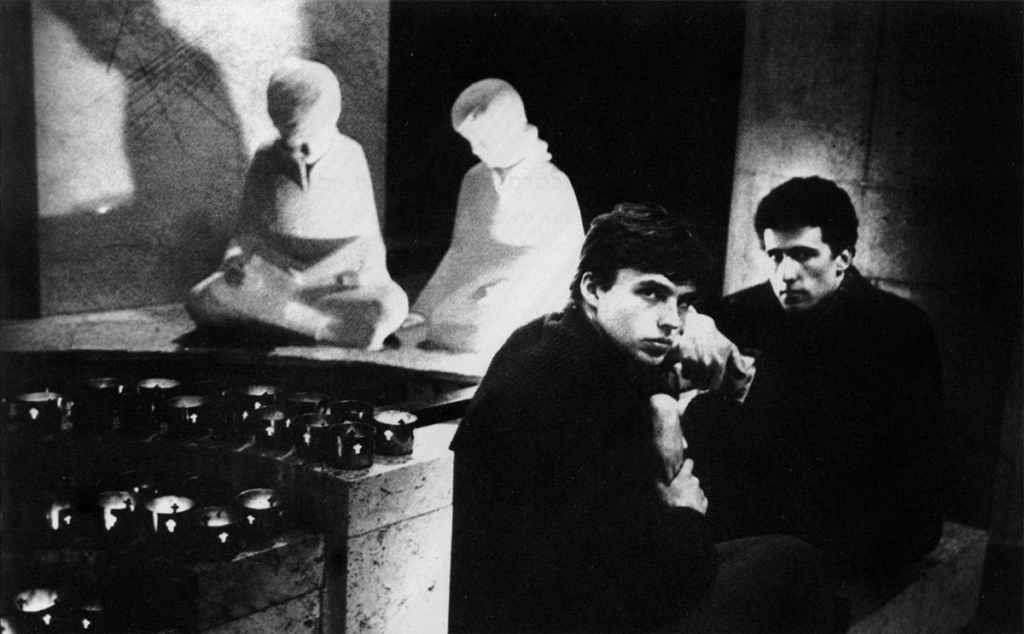
The album’s closing track, ‘The Beginning And The End’, was actually an old song dating from Andy and Paul’s VCLXI days. Back then, the band had problems in getting it to sound right and they remarked in an issue of the OMD Newsletter that the version used on the album was “quite successful” but that perhaps they would do it again differently in the future.
“The final track and another song about the apocalypse. The album’s epitaph” comments Andy, “Turned into a song of farewell to love – I was such a cheerful boy!”
“Hand played marimba and the beautiful Mellotron Boy’s Choir fades out.”
The final track and another song about the apocalypse. The album’s epitaph. Turned into a song of farewell to love – I was such a cheerful boy!
— Orchestral Manoeuvres in the Dark (@OfficialOMD) April 14, 2020
The track’s simple percussion is also an example of OMD’s practical approach to using whatever they had: “It was our oldest drum machine which we bought before our CR78. Same one used on ‘She’s Leaving’.”
Architecture & Morality‘s closing track was also a composition that was revived for the band’s prestigious Royal Albert Hall concert in 2016. “Playing guitar in the spotlight in ‘The Beginning And The End’ at the Royal Albert Hall was a moment that took my breath away” added Stu Kershaw.
Yes. We had never expected the success, we were exhausted. Of All The Things We've Made (b-side to Maid) was supposed to be our last ever OMD song. https://t.co/hnvmIBO9A1
— Orchestral Manoeuvres in the Dark (@OfficialOMD) April 14, 2020
Overall, the listening party helped to re-evaluate Architecture & Morality as an album and as an example of the power of electronic music itself. But it also served as a reminder of how pioneering OMD were for their time.
Meanwhile, the enthusiasm expressed during the Twitter session looks likely to be repeated with a follow-up for another OMD album in the near future.
https://timstwitterlisteningparty.com/
https://twitter.com/Tim_Burgess
https://twitter.com/OfficialOMD
https://twitter.com/OMDMessages
You can replay the Twitter feed via this link:
https://timstwitterlisteningparty.com/pages/replay/feed_40.html
More articles on Architecture & Moraility:
Paul Humphreys Interview
Mal Holmes Interview
Andy McCluskey Interview
Martin Cooper Interview
Bret Wickens Interview
Maid Of Orleans: Orphan On A Wave



